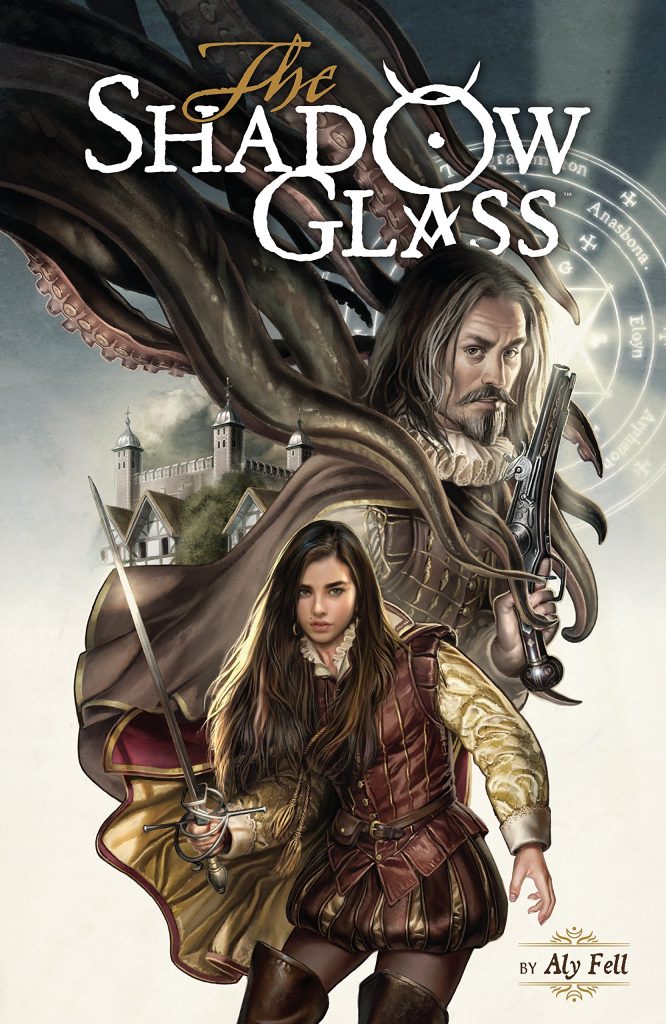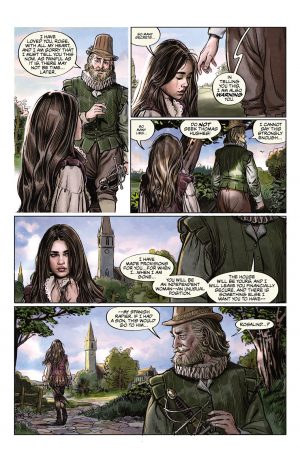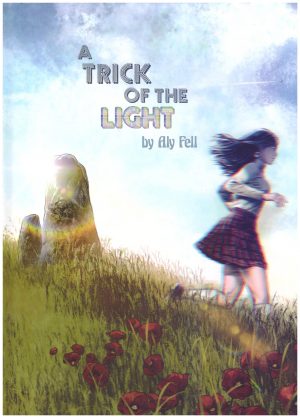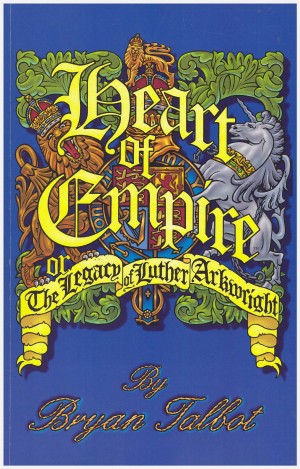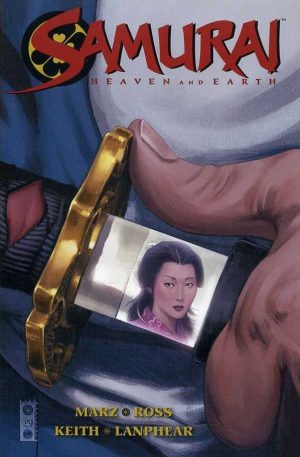Review by Frank Plowright
The luscious character-based art of The Shadow Glass prompts the thought that no-one can be this good with their first comic project, but that ignores Aly Fell’s long experience in illustration and animation. He supplies the naturalistic look of a European graphic novel, both artistically and via the period setting, which is Elizabethan England. It’s where unconventional Rose Larkspur is apprenticed to the Queen’s experimental sorcerer John Dee, who twenty years earlier ran a mystical process with Thomas Hughes, a man who seduced his best friend’s wife and who is actually Rose’s father. Now ailing, the man who raised Rose as his own implores her not to trace Hughes. The Shadow Glass is a mirror said to have mystical properties, and in the right circumstances to gaze into another world.
If this all sounds traditional gothic horror, it’s because that’s the case to begin with, the Elizabethan setting notwithstanding, but a novel exploration of the genre also offers nods to Victorian literature and the additional sweetener is that art. There’s a love of the British countryside, with plenty of rolling green and stout oak among postcard half-timbered buildings, and detail applied to the clothes of the era.
Unfortunately, though, for all the effort applied to the art, the story is too predictable in places, rambles in others, and too many characters are one-note. Fell establishes that Rose is young and feeling out a personality, but she’s too easily manipulated by, well, almost everyone, and her belief that someone has died as the final chapter begins is a poor moment, especially as the sarcasm has been well sold by Fell. Furthermore even with the corruption of innocence an explicit theme, there’s the sniff of exploitation about some scenes. The remaining cast have their single purpose and never develop beyond it. The exception is Madimi, who’s not around for the first couple of chapters, but is instantly the most alluring character for their attitude as well as the way they’re drawn.
The art carries The Shadow Glass an awful long way, and quite understandably for some it will be more than enough, but a compressed version with beefed-up personalities would have been better.
